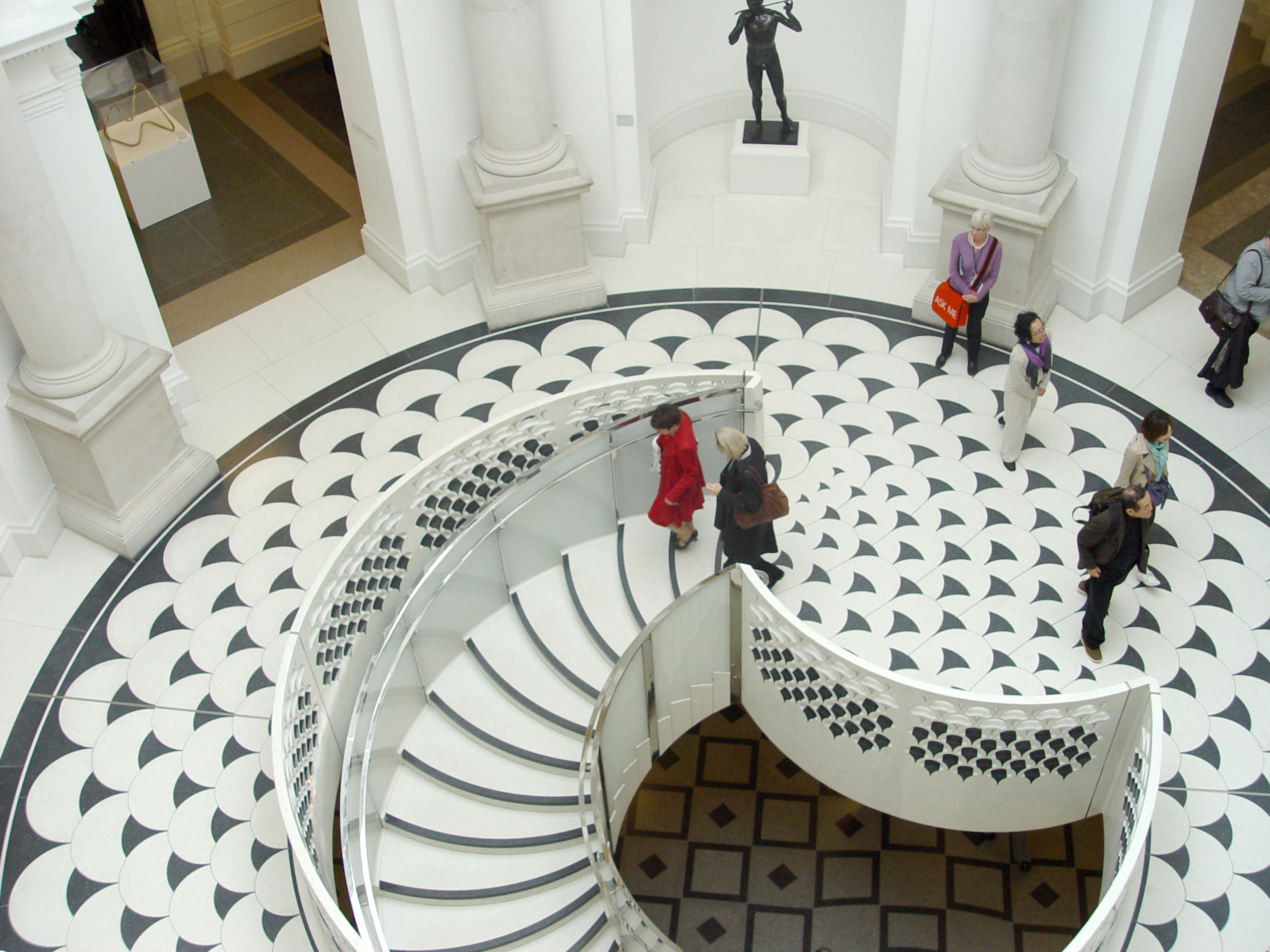Terrazzo : Tate Britain
Caruso St John was the architect, Szerelmey the specialist contractor, Agglotech the manufacturer. The results are Tate Britain, where art reigns supreme.
The awards are already rolling in for Tate Britain. Since the project was first mentioned in Natural Stone Specialist as the winner of a Tile Award this year (see the May issue) it has also been recognised by a RIBA Award and a RIBA / English Heritage Award for Sustaining the Historic Environment.
In part of what was, between 1816 and 1890, the ‘dreadful’ Millbank Penitentiary, the new look Tate Britain was unveiled to the public on 19 November last year.
The transformation of the oldest part of the Grade II* Millbank building by leading architectural practice Caruso St John followed the opening in May last year of 10 new galleries and the chronological presentation of Tate’s collection of 500 years of British art.
This £45million project on the south-east quadrant gallery, paid for with the help of a significant list of benefactors, included knocking a hole through the floor of the rotunda at the re-opened Millbank entrance to make the spaces below available for education and social activities.
Terrazzo was chosen for floors and linings because it was used for many of the original floors of the building. It has been used in a modern design that avoids becoming a pastiche of the original while having a timelessness that sits harmoniously with the original architecture of the building.
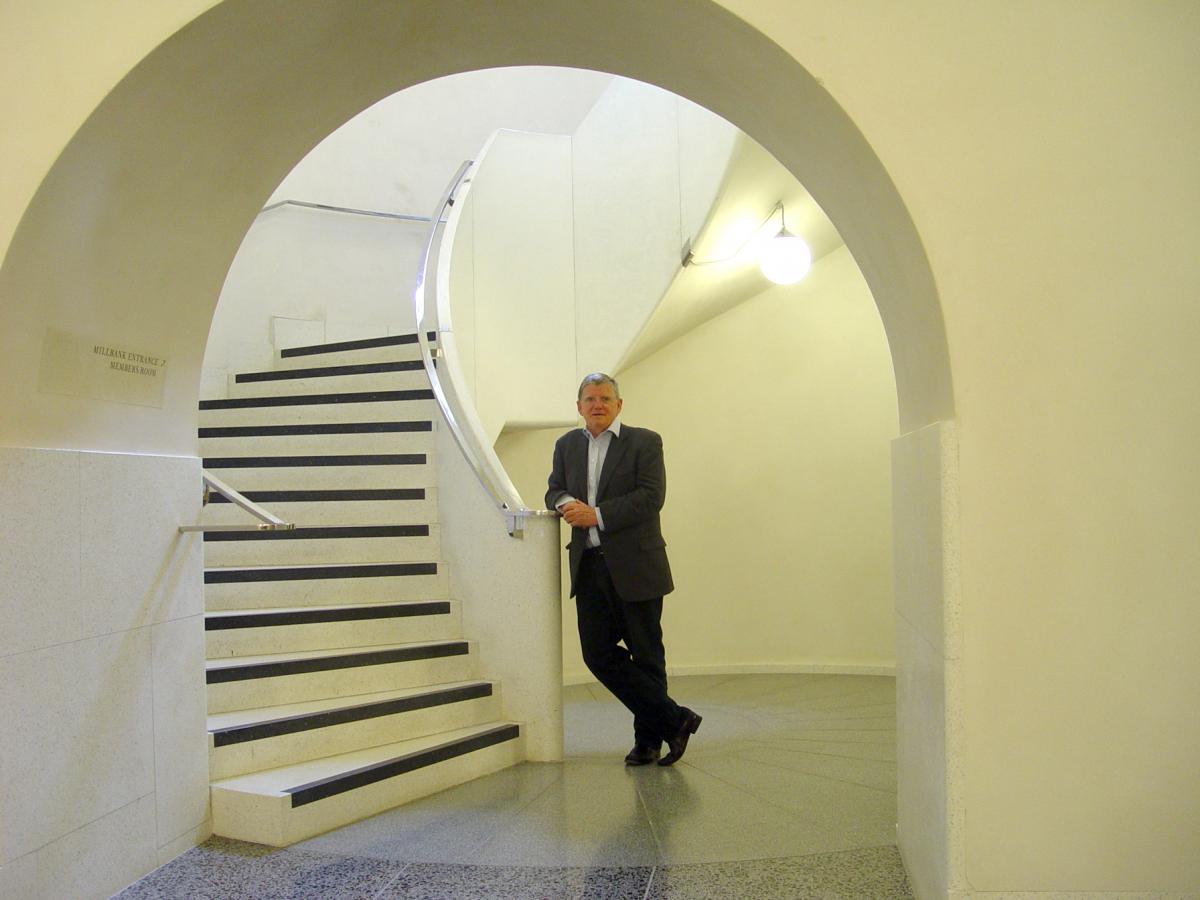 Nigel Dunnett, who heads Agglotech UK, which supplied the Terrazzo made by its Italian parent, and Peter McColm, specialist contractor Szerelmey’s Contracts Manager on the project, have mutual respect for each other’s contribution to the project.
Nigel Dunnett, who heads Agglotech UK, which supplied the Terrazzo made by its Italian parent, and Peter McColm, specialist contractor Szerelmey’s Contracts Manager on the project, have mutual respect for each other’s contribution to the project.
Peter McColm says: “There were some complex patterns and cutting requirements with tight tolerances to meet throughout this project and Agglotech was able to achieve these, both on time and on budget. We were very pleased with the overall quality of Agglotech’s material.”
All the material was produced to the shapes and sizes required as finished product so that no cutting was necessary on site. It means the measuring has to be accurate but makes installation much easier and quicker. Szerelmey was responsible for the measuring and supplied templates for Agglotech to work to.
Nigel Dunnett says: “This project couldn’t have worked better. You had top rate architects, a very good client (the Tate was heavily involved) and Szerelmey was thoroughly professional from start to finish. Throughout the whole contract there were never any debates or arguments. Working with Szerelmey was a joy.”
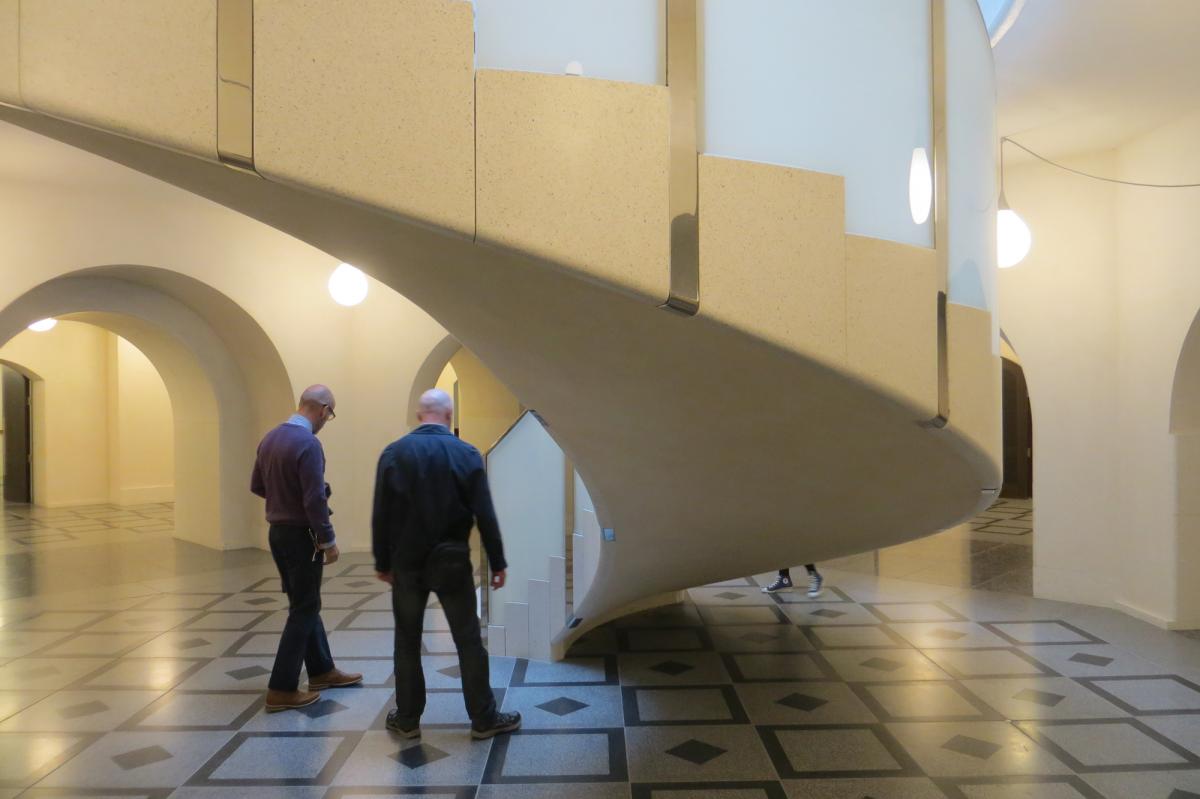 As you can see from the photographs here, some of the patterns are quite complex. For the main floor in the rotunda, Agglotech in Verona, Italy, where all the terrazzo was made, hired a warehouse and laid out the floor dry before shipping it to the UK. It was checked by the client, the architect, the main contractor (Lend Lease) and Szerelmey before it left Italy – and there was still a problem.
As you can see from the photographs here, some of the patterns are quite complex. For the main floor in the rotunda, Agglotech in Verona, Italy, where all the terrazzo was made, hired a warehouse and laid out the floor dry before shipping it to the UK. It was checked by the client, the architect, the main contractor (Lend Lease) and Szerelmey before it left Italy – and there was still a problem.
There was a bevel on the perimeter stones, which the architect did not want. But rather than it becoming a contractual issue Agglotech simply replaced the tiles.
While most of the terrazzo on the project was made at Agglotech’s factory, it did not have the wiresaws necessary to cut the material for the underside of the arches. Of course, there is no shortage of stone processors in Verona and it was a simple matter for Agglotech to put the work out to another firm nearby.
The re-opening of the main entrance to Tate Britain on Millbank combines the new architectural features with the excavation of some of the original architectural elements of the building. The changes restore the historical logic of the building, even with its new central spiral staircase and the new public spaces in the lower ground area below.
Agglotech supplied the 25 steps and risers for the new staircase, and also the stairs for another new spiral staircase, which is longer (66 steps) but slightly less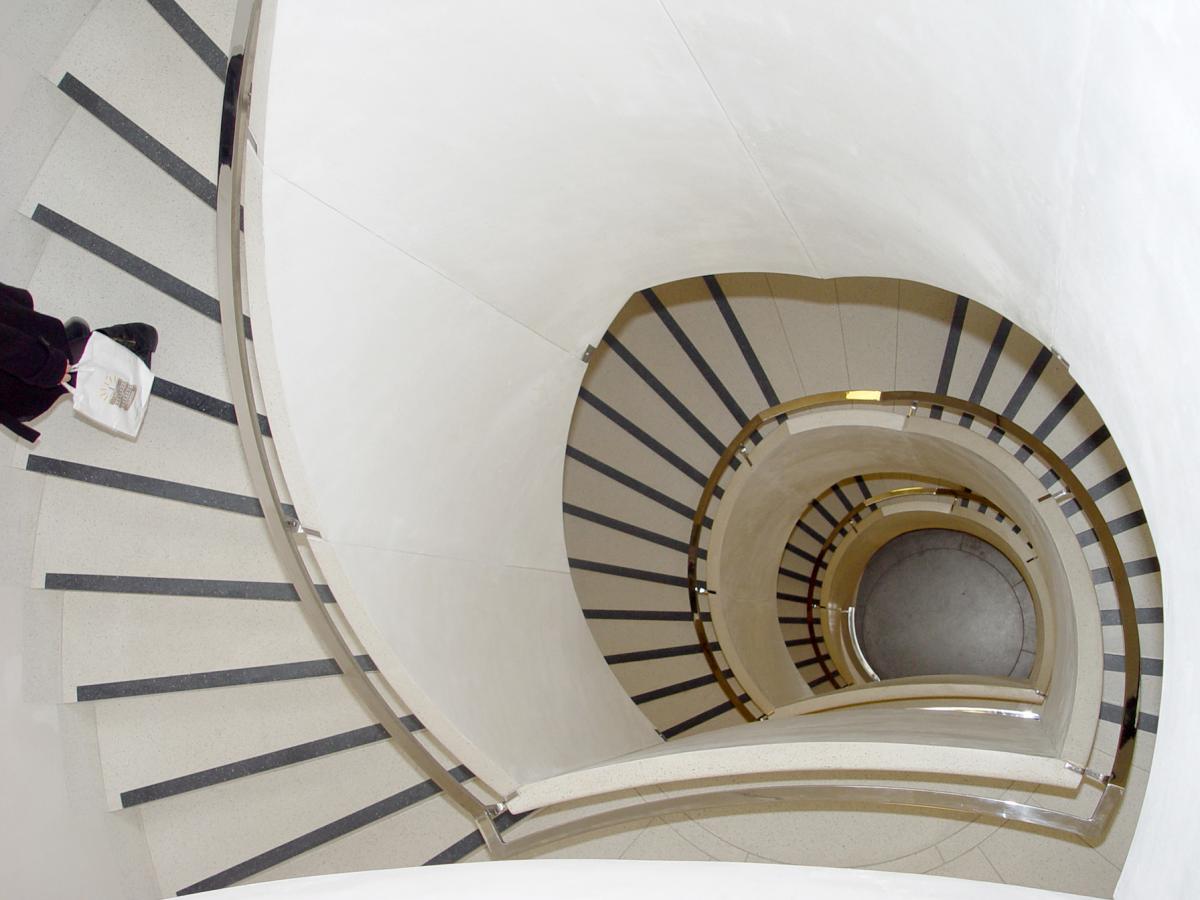 grand. Even so, there were touches such as the nosings on the steps not going the full length of the tread that added to the complexity of the work for Agglotech but are pleasing visually for the client and visitors to Tate Britain.
grand. Even so, there were touches such as the nosings on the steps not going the full length of the tread that added to the complexity of the work for Agglotech but are pleasing visually for the client and visitors to Tate Britain.
The project sees the re-opening of the Rex Whistler Restaurant and a new Djanogly Café opposite, which opens on to an exterior terrace. There are contemporary interpretations of tables and seating inspired by British Arts & Crafts designers from 1897, the year Tate Britain was founded.
The terrazzo extends into the new learning and public areas, including the toilets, at the lower level reached by the new stairs in the rotunda. The circular balcony of the rotunda’s domed atrium has also now been opened – having been closed to visitors since the 1920s – as a new café and bar for Tate members. At the front, a large room overlooking the river has been created by removing partitions and ceilings to expose the original structure.
The choice of Agglotech to supply the terrazzo for this phase of the project came about as a result of Caruso St John Architects contacting Nigel Dunnett in 2009. “It’s a small world, the world of architecture,” says Nigel, “and someone had seen some Agglotech work. It’s been available in the UK for about 10 years, although it has never been heavily promoted.”
Nigel had used Agglotech terrazzo himself on a project he had been involved with some years ago on Canary Wharf, which eventually led to him representing the Italian manufacturers in the UK.
His own background is diverse and has involved marketing, accountancy (he is a chartered accountant) and managerial roles in companies in various industries. He eventually moved into construction and the periphery of the stone sector.
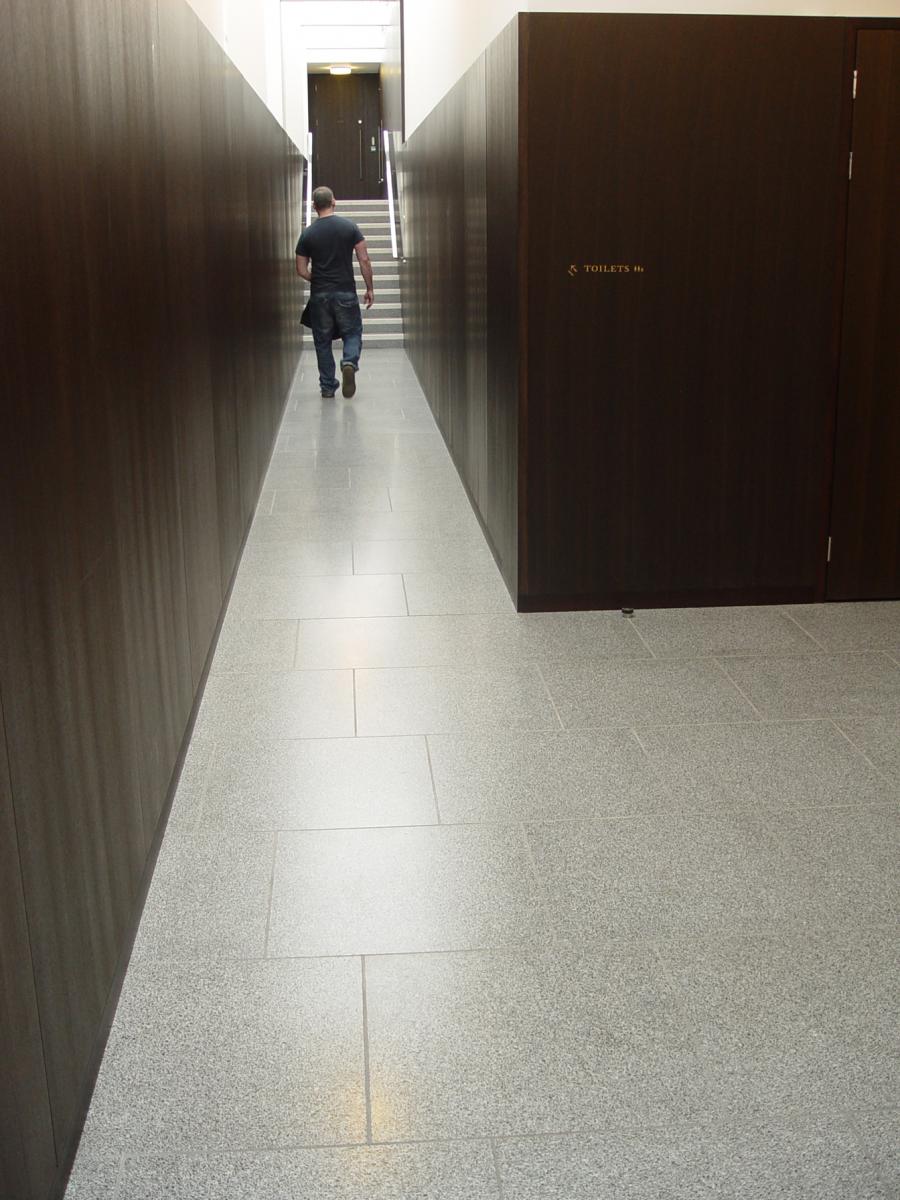 Having become aware of Agglotech on projects he had been involved in, Nigel approached the Italians to see if they wanted him to represent them in the UK. “I couldn’t understand why Agglotech wasn’t more widely used in the UK,” he says.
Having become aware of Agglotech on projects he had been involved in, Nigel approached the Italians to see if they wanted him to represent them in the UK. “I couldn’t understand why Agglotech wasn’t more widely used in the UK,” he says.
Although terrazzo is used on landmark projects such as Tate Britain, it is more usually used on more prosaic developments, including public sector hospitals, schools and leisure centres. “We’re currently working with three local authorities,” says Nigel. “We’re supplying the floors for a leisure centre now. It’s at the cheap and cheerful end of the scale but it is still quite complex and detailed. It’s not expensive, though. We pride ourselves on our economic viability.”
And, like stone companies, Agglotech is happy to discuss projects with designers to try to devise simpler and less expensive ways of achieving required results.
“We’re working on a relatively small residential project at the moment. The architect has come up with some very clever designs for water features but has a budget for them of only £7-8,000. By listening to his requirements we have found ways of sawing the blocks economically to come in within his budget. That’s the benefit of having the back-up of our own design team in Italy.”
And an unusual use of terrazzo has resulted from the Tate Britain project… jewellery.
Tessa Blenkinsopp, famous for glass jewellery, has been commissioned by the Tate to make jewellery that reflects the gallery. She approached Agglotech to supply her with versions of the terrazzo used on the floors.
Nigel also thought a London office made sense because London is an international centre for architecture – and architects based in London have indeed been behind the specification of Agglotech for projects in South Africa, America and the Middle East.
Agglotech terrazzo is made in a highly automated and strictly quality controlled process using specialist cement from Italcementi mixed with marble and natural stone chippings or pebbles that would otherwise mostly be quarry waste.
The mix is settled using vibration and vacuum chambers then set as blocks that are approaching 3m3 and weigh 7.5tonnes. Once fully cured – which takes 30 days – they are processed in the same way as natural stone, being sawn and polished (or otherwise finished) – and, if the project requires it, shaped to a specific requirement such as the tiles at the Tate. They are usually sealed.
The block is sawn as required, which means it can be any dimensions specified. There is a lot of block in stock because, as Agglotech describes it, the company produces enough finished product every day to tile the whole of Wembley Stadium. It has 50 standard colours and at any one time and has 50 blocks of each ready for sawing.
As well as the standard mixes, it can produce terrazzo in infinite variations. For Tate Britain, specific mixes were chosen. The architects were shown the results of the mixes on a computer simulation and made their choices, but they still went through 40 different physical samples before picking the exact shades they wanted.
“We have made about 1,000 different bespoke mixes for customers,” says Nigel. “We have yet to find an architect who came up with a design we haven’t been able to match.” And all the mixes are recorded so that if a customer returns for more of the same it can be reproduced.
Tiles, whether bespoke or standard sizes, are manufactured to a tolerance of plus-or-minus 0.3mm. Finally, they are carefully packaged to avoid damage and transported to projects all over the world.

